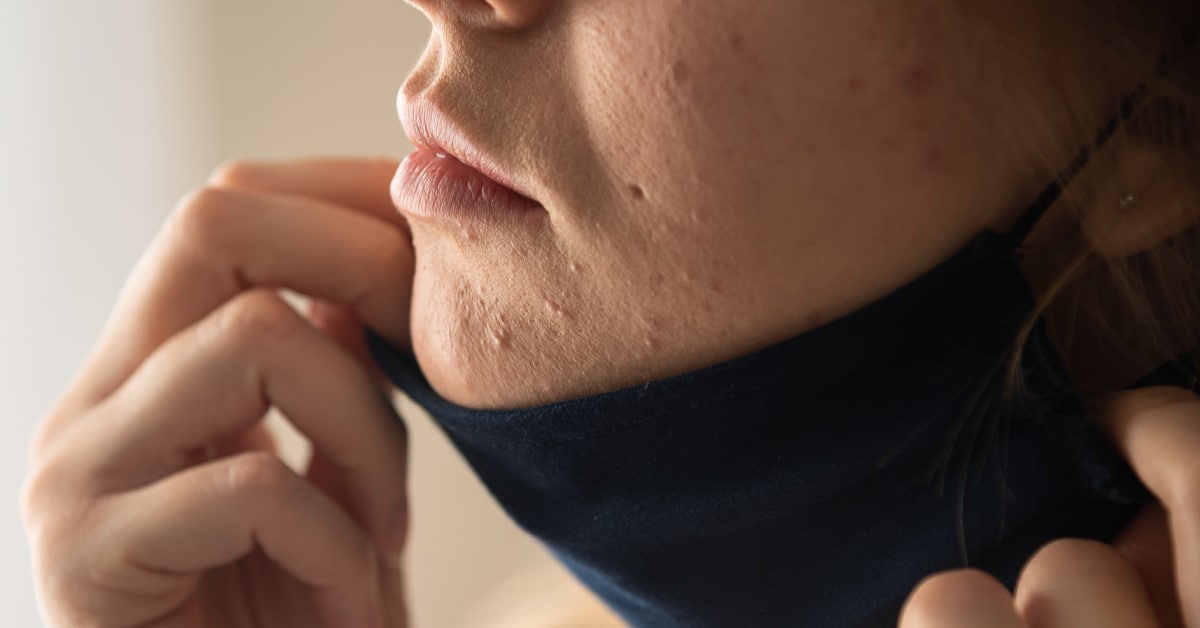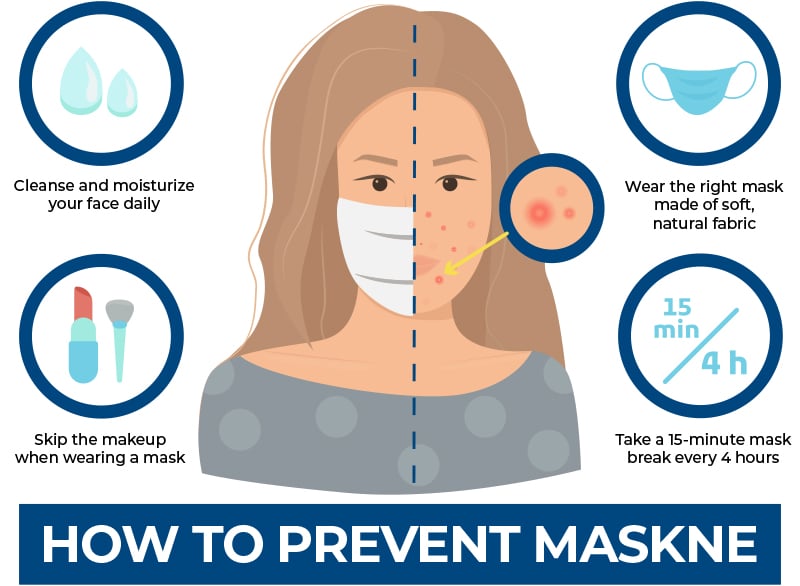
15
Feb
The Ugly Truth About Maskne and How to Avoid It
In the era of COVID-19, wearing a mask is the new normal. While covering your nose and mouth may help slow the spread of the coronavirus, wearing a mask for long periods of time can cause other issues, like maskne – mask-related acne.
Maskne has always been an issue for healthcare workers, but with the general public now wearing masks on a daily basis, dermatologists are seeing an uptick in cases.
Whether you’re dealing with maskne yourself or want to avoid it in the future, you may be wondering what causes this condition and how you can avoid it.
What Causes Maskne?
Maskne, or acne mechanica, can be caused by many things. Masks can cause rubbing, friction, pressure and stretching that irritates sensitive parts of your face. Maskne can develop anywhere a mask touches your face, including the edges, but it tends to affect the chin, tip of the nose, and areas surrounding the nose.
Breathing and talking also creates a hot, humid environment inside of your mask, which is the perfect breeding ground for acne-causing bacteria.
The combination of bacterial growth and friction can cause acne and other skin conditions, such as perioral dermatitis.
The ugly truth is that maskne can affect anyone, even those who never had issues with acne. Fortunately, there are steps you can take to treat and even prevent maskne.
Maskne Treatment
Adopting a health and consistent skincare routine is the first step to treating maskne.
Use a Gentle Cleanser and Wash Your Face Regularly
Masks are the new norm, so you’re still going to contend with irritation from your face mask. For this reason, it’s important to use a gentle cleanser that won’t cause further irritation.
If you have severe maskne, try using a cleanser with salicylic acid or benzoyl peroxide.
Wash your face regularly:
-
Morning
-
Evening
-
After wearing your mask for a long period of time
Follow up with a noncomedogenic moisturizer that won’t clog your pores. Regular, consistent cleansing and moisturizing can help prevent irritation and bacterial growth that causes maskne.
Use Spot Treatments
For mild or moderate cases of maskne, try spot treatments that contain 2.5% or 5% benzoyl peroxide. Avoid products that contain a higher concentration of benzoyl peroxide, as this can cause more irritation.
Go Makeup-Free
Face makeup can clog your pores and make maskne even worse. Skip the foundation, concealer and blush. Go make-up free during treatment. Wearing a mask will cover most trouble areas.
How to Avoid Maskne
Mask-wearing will continue to be the norm for the foreseeable future, so it’s important to take steps to prevent maskne in the first place. These prevention tips may help.
Reevaluate Your Mask Material
If your skin issue looks more like a rash than conventional acne, it may be contact dermatitis. Allergies to certain mask materials can cause uncomfortable rashes. Trying a new mask material may help resolve the problem and prevent future breakouts.
Wash Fabric Masks Regularly
Cloth masks should be washed regularly, especially if you’re wearing them for long periods of time. Fabric masks absorb oil, dirt and sweat, so it’s important to clean them regularly.
Take Mask Breaks Every Few Hours
The American Academy of Dermatology Association recommends taking a mask break every four hours for 15 minutes. It is important to only follow this rule if you can safely remove your mask. Make sure that you can be physically distanced from people during your break, and be sure to wash your hands before and after your mask break.
The ugly truth about maskne is that it is a very real thing, and it will continue to be a problem for the foreseeable future. Taking steps to treat and prevent it can help keep your skin looking its best during the pandemic.
